Lactarius sanguifluus: blood chanterelles
2 years ago · Updated 6 months ago
- The various names of Lactarius sanguifluus
- Lactarius sanguifluus, How to distinguish them? Macroscopic description
- Exploring the Habitat, Distribution, and Season of Lactarius sanguifluus
- Delicious and nutritious: edibility and nutritional properties of Lactarius sanguifluus
- Nutritional properties of Lactarius sanguifluus
- Lactarius sanguifluus, similar species and possible confusion
- How to look for blood mushrooms, Lactarius sanguifluus
The various names of Lactarius sanguifluus
Lactarius sanguifluus, a mushroom with intense colors, is known by various common names in different regions. These common names are the same as those given to Lactarius deliciosus. Some of these names are:
- Girolle and Nèfle
- Anis and Guiscane
- Mícula y Robellón
- Níscalo de Sangre Vinosa
- Rovelló y Escarlata-sanguínea
- Esclatasang y Guíscano Sanguino
These names capture the beauty and uniqueness of this mushroom, highlighting its striking appearance and connection to blood. Each name reflects a unique view of this fascinating mushroom in the natural world.
Lactarius sanguifluus, How to distinguish them? Macroscopic description
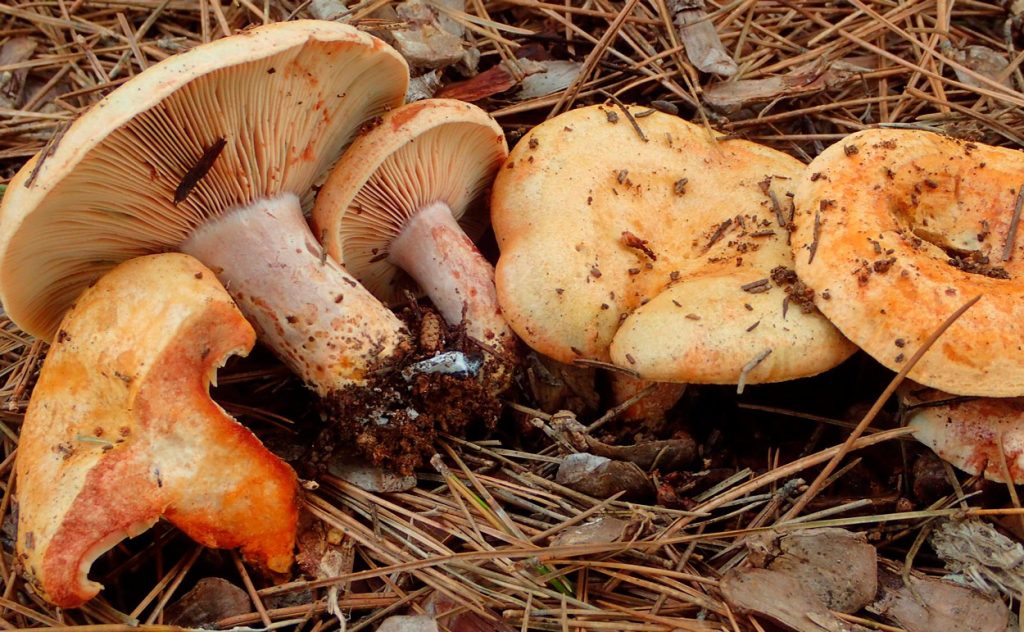
Cap 6-16 cm, convex to flat, becoming cup-shaped, zoned in concentric circles.
Cuticle dry, slightly velvety, separable only at the edge. Variable coloration from pale ochre to reddish orange to wine red, with greenish spots (promoted by the parasitic fungus Hypomyces lateritius), which curiously improve the texture and flavor. , reddish-orange coloration, sometimes pale or with greenish tones
Gills somewhat decurrent, uneven in configuration, fairly crowded and with lamellulae, initially pale in color, between ochre and orange, quickly turning wine red or purple, exuding a wine red latex when injured.
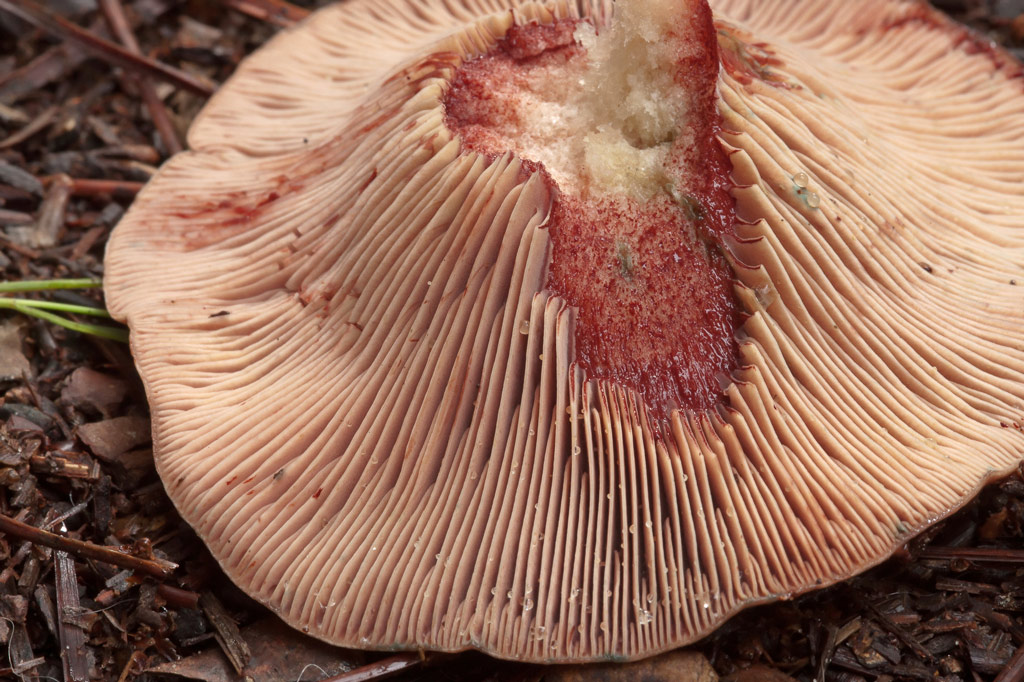
The stem is generally short, robust in appearance, solid in young specimens and then hollow, light in color, sometimes almost white but with a purple tinge, and usually with dark red latex scrobicles.
Blood-red latex. Stem 2-6 cm long, sturdy, solid when young, pruinose, slightly attenuated at the base, wine-white or reddish-orange, with small dark wine-colored holes, giving the base an orange color when cut.
Thick, dense flesh, pale ochre in color, sometimes almost white, tinged with the latex it exudes when cut, which is wine-red in color, turning purple when dried. It has a pleasant smell and a mild flavor, although slightly pungent when raw.
Pale ochre spores, warty, rounded or ellipsoid.
Exploring the Habitat, Distribution, and Season of Lactarius sanguifluus
Habitat and Distribution
Lactarius sanguifluus, known for its intense and attractive colors, finds its home in specific environments that allow it to flourish and thrive. Below, we explore its habitat, distribution, and how it relates to the surrounding conifers.
- Specific Habitat: This mushroom feels at home in pine forests, mainly those dominated by Aleppo pine (Pinus halepensis) and maritime pine (Pinus pinaster). It prefers areas with shady, humus-rich undergrowth, establishing itself in calcareous soils. Its growth is favored under the cover of pine cones and on moss carpets.
- Relationship with Pines: The fruiting bodies of Lactarius sanguifluus appear isolated or in fairy rings. It is often found next to pine trees, specifically in mature forests of species of the genus Pinus. The mycorrhizae it forms with pine trees are essential for its development and are exclusive to this association.
- Geographical distribution: This mushroom is widely distributed in coniferous forest formations on the Iberian Peninsula. In Spain, it is found in regions close to the Mediterranean, such as the Balearic Islands, Catalonia, the Valencian Community, and Murcia. Its presence is more notable in warm, sunny areas, and its presence decreases with increasing altitude.
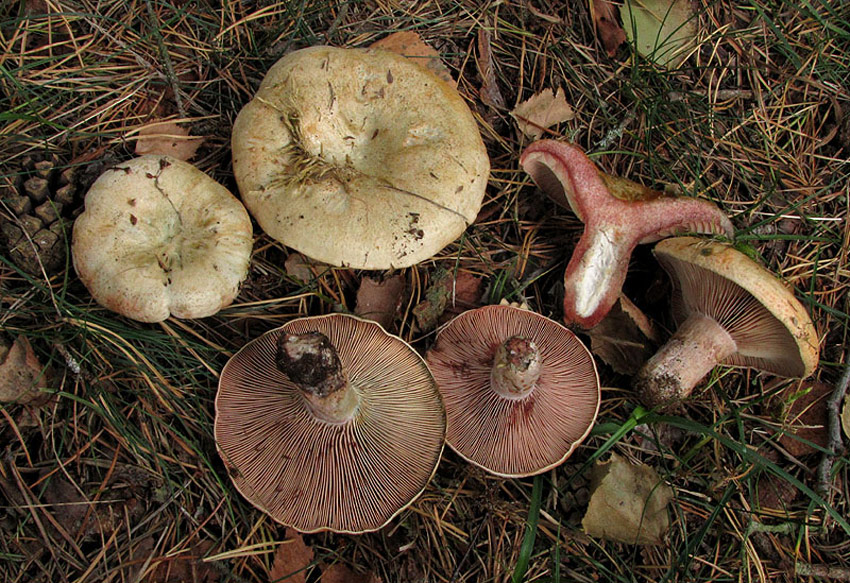
Season
The fruiting season of Lactarius sanguifluus extends from summer to fall, being eminently autumnal, with peak activity in October and November. During this period, its bright colors add a dose of vibrant beauty to the landscape.
In summary, Lactarius sanguifluus has a close relationship with Mediterranean pine forests and prefers calcareous soils and warm climates. Its fruiting in autumn gives it a prominent role in the natural world's seasonal cycle, adding a distinctive touch to the forest's color palette.
Delicious and nutritious: edibility and nutritional properties of Lactarius sanguifluus
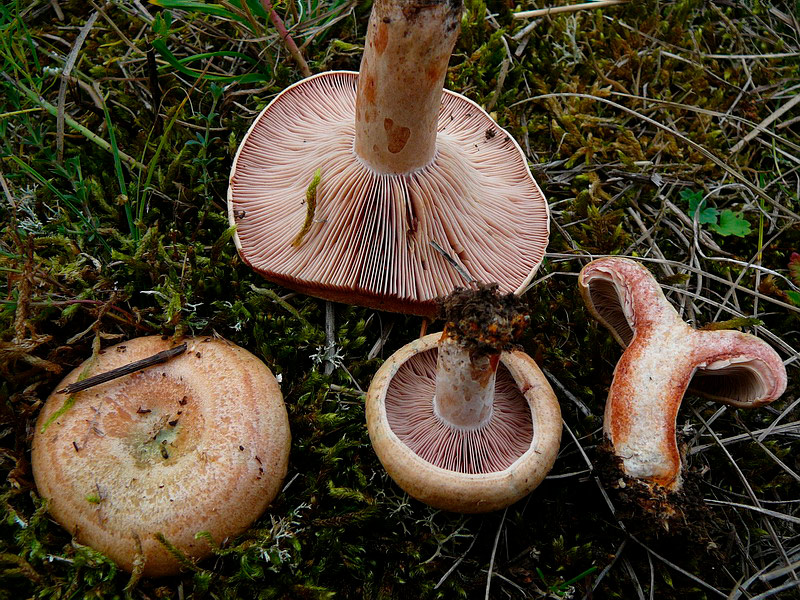
Edibility of Lactarius sanguifluus
Lactarius sanguifluus, also known as “blood milk cap” due to its intense and striking color, is a mushroom that has attracted the attention of food enthusiasts for its culinary potential. Below, we explore its edibility and how this species can be enjoyed in the kitchen:
- Culinary tradition: In some regions, Lactarius sanguifluus has been used in local cuisine for generations. Its bright colors and distinctive flavor have made it an interesting ingredient in various dishes.
- Preparation: Before eating, it is crucial to ensure that the mushroom is in good condition and at an appropriate stage of maturity. It is recommended to cook it before consumption, as cooking can help improve its flavor and texture.
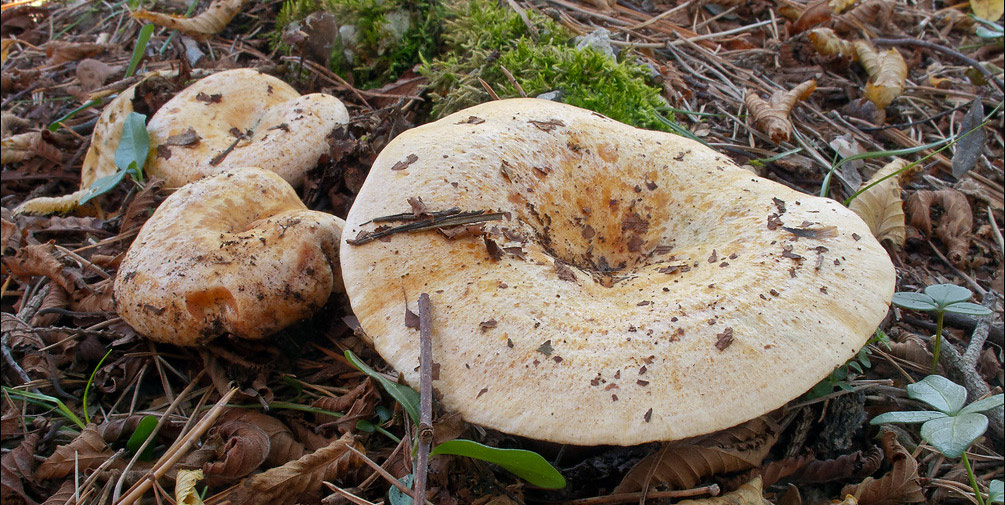
Nutritional properties of Lactarius sanguifluus
In addition to its culinary potential, Lactarius sanguifluus can also provide nutritional benefits to those who include it in their diet. Here is an overview of its nutritional properties:
- Protein: Lactarius sanguifluus contains a moderate amount of protein, which is essential for the development and repair of tissues in the human body.
- Vitamins and minerals: This mushroom can be a source of vitamins and minerals, such as vitamin D, which is essential for bone health and the immune system, and minerals such as potassium and phosphorus.
- Low in Fat: Lactarius sanguifluus tends to be low in fat, which may be beneficial for those seeking to maintain a balanced fat intake.
It is important to note that, although Lactarius sanguifluus may be edible and potentially nutritious, it is always recommended to have accurate identification before consuming any wild mushroom. In addition, people with allergies or other health concerns should exercise caution and consult a healthcare professional before incorporating new foods into their diet.
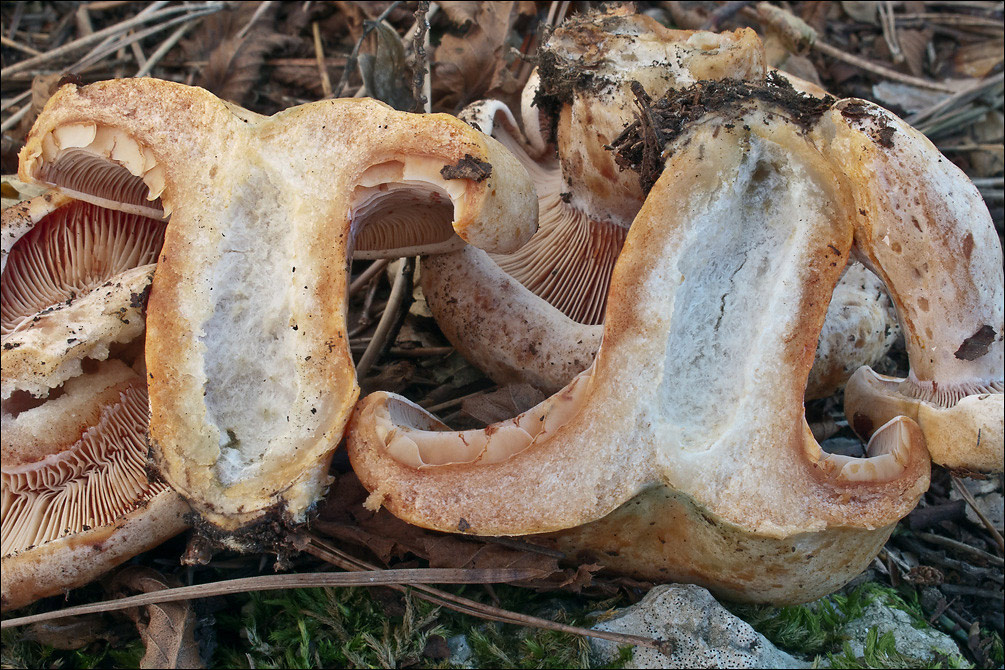
Lactarius sanguifluus absorbs heavy metals.
Its mushrooms, like those of other species, can bioaccumulate toxic heavy metals from contaminated soils. Therefore, it is not recommended to consume mushrooms harvested from potentially contaminated soils such as industrial soils or near busy roads.
In one study, Lactarius sanguifluus mushrooms were found to contain high levels of zinc, manganese, nickel, cobalt, cadmium, and lead. 8
Bioactive compounds in Lactarius sanguifluus
Lactarius sanguifluus contains a mixture of sterols. The predominant sterol is ergosterol (56.6% of total sterols), with a smaller proportion of other ergosterol derivatives.10
The latex contains pigments based on sesquiterpenes with a guanine skeleton,11 which include compounds commonly known as lactarovioline and sangolactarius. Some of these products are thought to be produced by enzymatic action when the mushroom is broken or damaged.
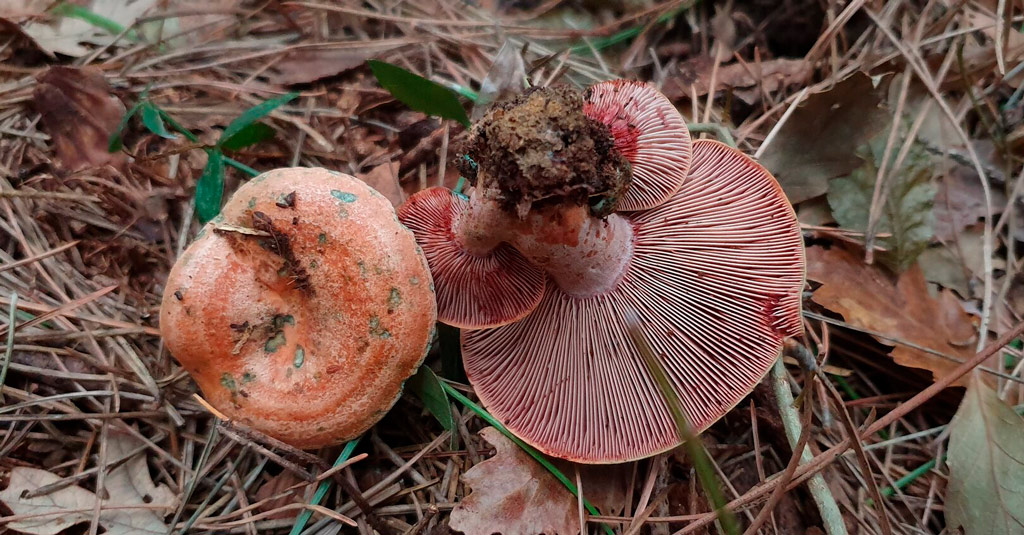
Lactarius sanguifluus, similar species and possible confusion
Historically, Lactarius vinosus has been considered a variant of Lactarius sanguifluus. However, detailed research on its morphology, including macroscopic characteristics such as spore ornamentation, as well as molecular analyses, have confirmed that they are two distinct species.
The similarity between Lactarius vinosus and Lactarius deliciosus can lead to confusion. Although the two mushrooms share characteristics, such as latex that flows when cut, Lactarius vinosus has a purplish latex, unlike Lactarius deliciosus, whose latex is more orange in color.
In addition, it is important to highlight the differences with other related species within the Lactarius genus:
- Lactarius deliciosus: the best known and most sought-after milk cap mushroom
- Lactarius semisanguifluus: Characterized by orange latex that turns wine red when dry.
- Lactarius violaceus or Lactarius vinosus: Although there is some controversy, these could be considered the same species or varieties. Lactarius violaceus has a purplish cap and latex.
- Lactarius salmonicolor: Distinguished by the fact that it grows under spruce trees and has a uniform salmon color that never turns green.
- Lactarius deterrimus: Similar to Lactarius salmonicolor, with a bitter and pungent taste. Its unique characteristic is the change to green tones on the wound.
- Lactarius quieticolor: It differs in its pale cap due to the presence of pruina.
- Lactarius hemicyaneus: This is a variant of Lactarius quieticolor, its flesh turns purple on contact with air.
- Lactarius torminosus: Poisonous, characterized by the presence of white latex.It is essential to learn how to identify these differences to avoid potentially dangerous confusion when picking and eating wild mushrooms.
How to look for blood mushrooms, Lactarius sanguifluus
A common companion mushroom is another species of the Russulaceae family, known as chivato (Russula torulosa), with a characteristic purplish-pink color and a white stem and gills, which will reveal the presence of guíscanos nearby, as it is almost always present. Another mushroom indicator for finding guíscanos is the bojines (suillus sp. ). If they are abundant, the terrain is favorable and a few weeks after seeing them, we can search for Lactarius with a good chance of success.
The appearance and flowering of Lactarius deliciosus is favored by numerous guíscanos following heavy summer storms and particularly wet October and November weather. Once the mushroom activates its mycelium to produce the fruiting body, if we know where to find it, all we have to do is visit the areas with mushrooms every few days, about 4 or 7, to fill the baskets again, as it will produce them repeatedly as long as the optimal conditions are maintained, i.e., no frost, no wind drying out the environment, and regular rain.
Although there are similar species of the same genus that may be indigestible or even slightly toxic, these have hairiness or a watery or whitish latex, while Lactarius sanguifluus maintains the intense blood-red coloration of the exudate, orange in Lactarius deliciosus, while also having a characteristic outer circle of the same color on the stem, which we can see clearly when cutting it.
Photographies de Lactarius sanguifluus
À bientôt sur la montagne!

Te pueden interesar